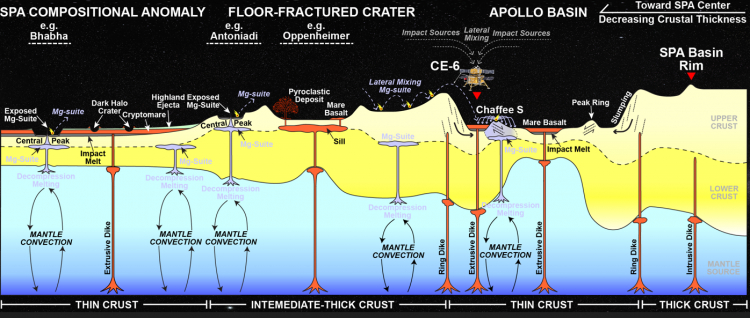At the start of June 2024, China’s Chang’e 6 lunar probe successfully touched down on the far side of the Moon, landing softly near the lunar south pole.
Its main mission, which it performed alongside various side quests, was to study and return the first-ever samples from the Moon’s far side. It did so, bringing a whopping 1,935.3 grams (68.) of material from the lunar surface on June 25.
The Moon is tidally locked to Earth, meaning that its rotation speed around its own axis matches the time it takes to orbit around the Earth. This is the case for most planet-moon systems where the planet is much larger than its moon and close enough to it, as the smaller body’s rotation speed is altered as it orbits the planet with much more mass until they are in sync.
Often referred to as the “dark side” of the Moon, the far side actually receives about the same amount of sunlight. However, there are notable differences between the two sides, which researchers realized after the onset of space travel. Though heavily cratered, the far side of the Moon does not have the deep basins and “lunar seas” seen on the near side, and its crust was measured to be thicker by the Gravity Recovery and Interior Laboratory mission in 2012. It also, weirdly, appears to be more conductive.
Studying these samples could help clear up some of these mysteries, perhaps telling us a little more about how the Moon formed. Taking the first look at the samples, geologists from Hong Kong University found that the Chang’e 6 landing site at the South Pole-Aitken (SPA) basin is abundant in magmatism, where magma cools and solidifies, forming igneous rock.
“The results of this research set a significant geological framework to study plutonic rocks in the Chang’e-6 samples, especially Mg-suite rocks,” Professor Xianhua Li, an academic at the Chinese Academy of Science, said in a statement. “Their petrogenesis and timing are unclear, and this research would dramatically help to understand their origin mechanism.”
The study, in conjunction with previous studies of material and observations gathered from the near side of the Moon, revealed key volcanic differences between the two faces, likely related to crustal thickness.

The crust is thick at the SPA basin.
Image credit: Y. Qian
In areas where the crust is thick, extrusive volcanism (where magma flows on the surface and then cools) is seen to be dominant.
“For intermediate-thick-crust regions, such as Oppenheimer crater […], dikes stall under brecciated crater floors and laterally spread to form sills. For thick-crust regions, such as the exterior of SPA and the majority of the FS, magma overpressure cannot support its eruption, and dikes tend to intrude and stall, remaining in the crust,” the team explains in their paper. “The extensive intrusive magmatism across SPA is consistent with its intermediate-thick crust […], comparable to the mare–highland boundaries of the PKT, where most FMCs are located. These results support the hypothesis that crustal thickness is a major factor in accounting for the NS/FS discrepancy in mare volcanism.”
While interesting, there are plenty more questions to be answered, including why the SPA basin doesn’t contain as much basalt as is expected. These questions will hopefully be answered as scientists study the samples further, and collect more material from both sides of the Moon.
The study is published in The Astrophysical Journal Letters.
Source Link: Chinese Lander Found Signs Of Magmatic Structures On The Far Side Of The Moon